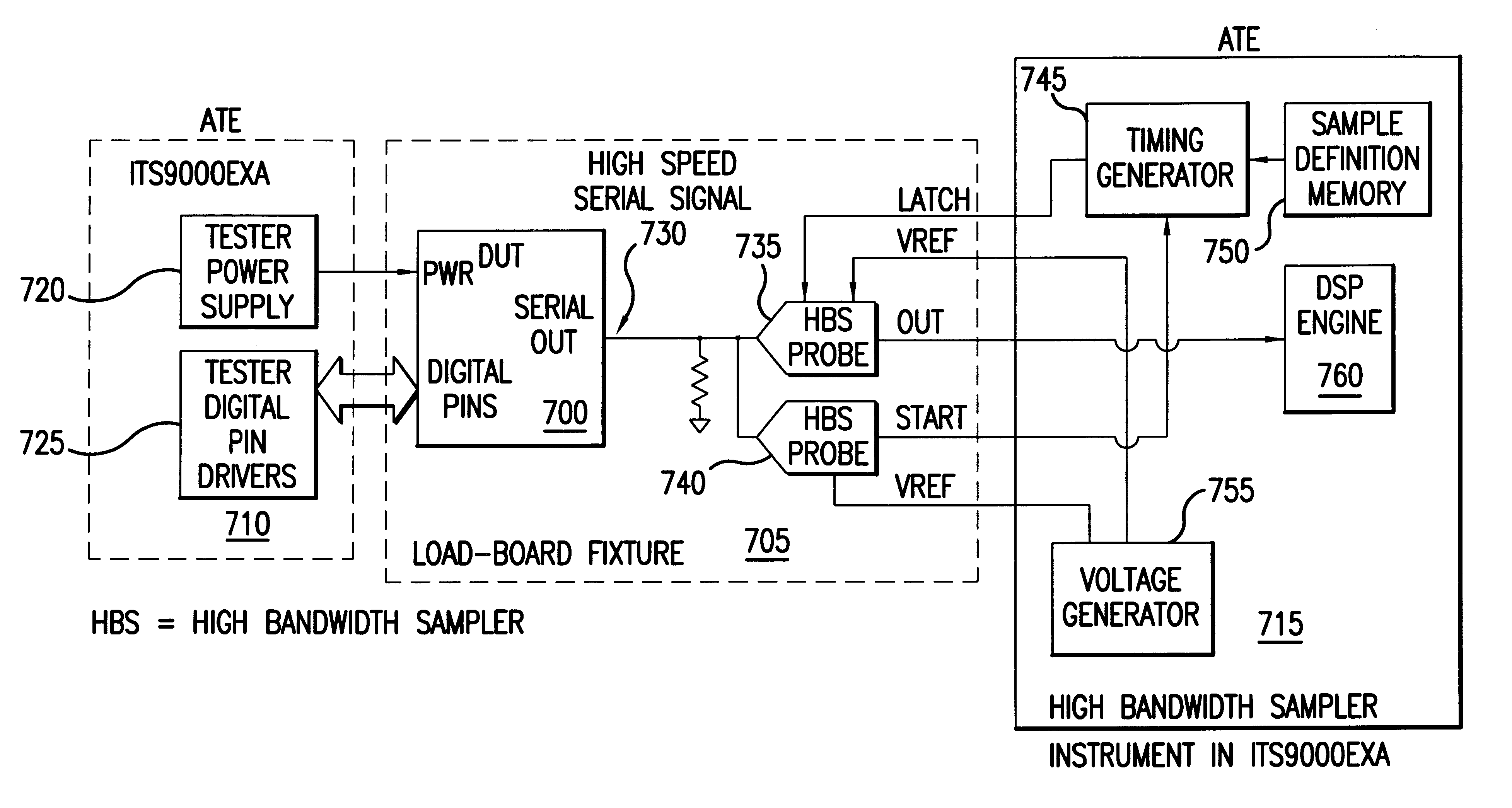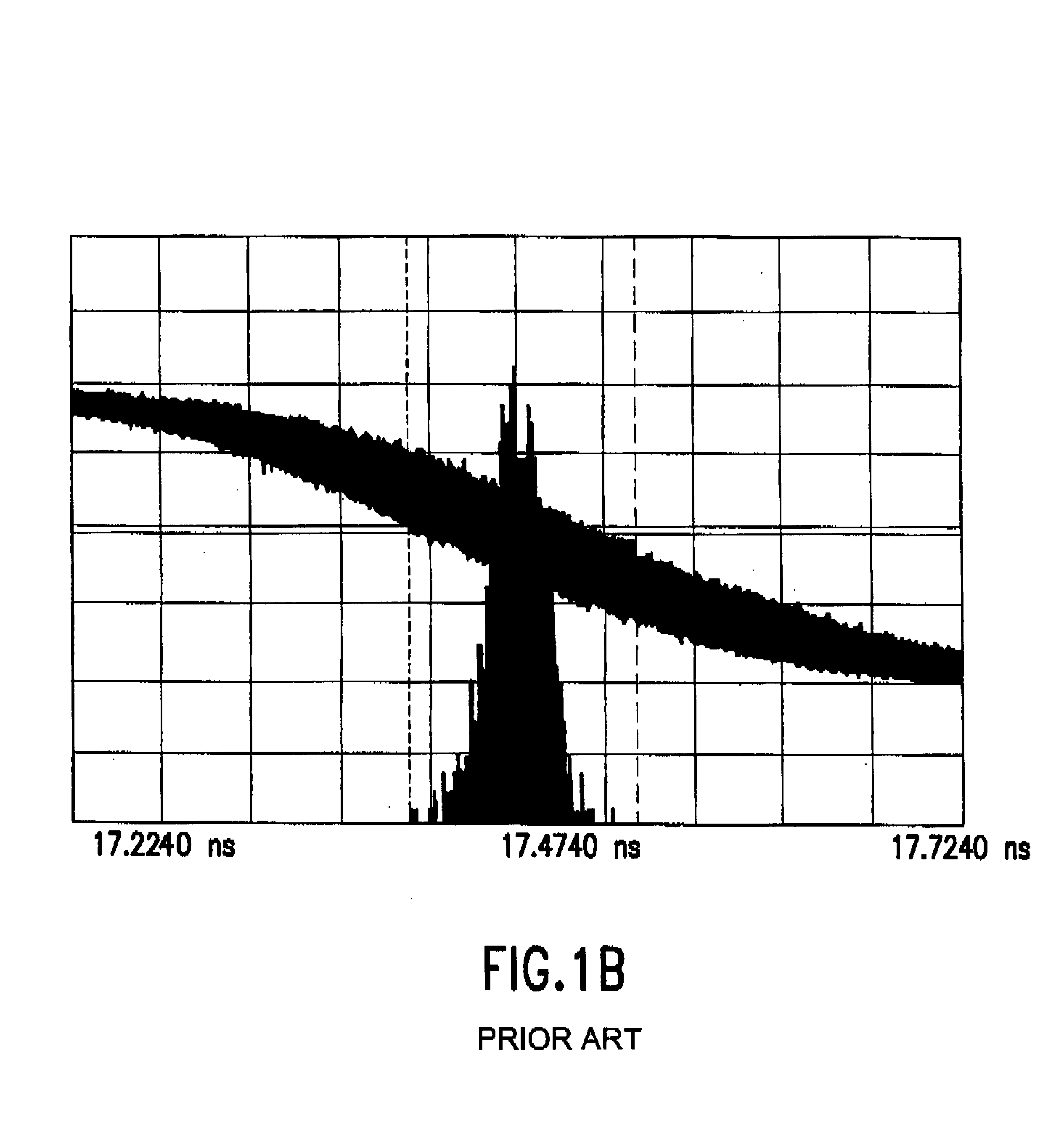Measuring jitter of high-speed data channels
a high-speed data channel and data jitter technology, applied in the direction of pulse characteristics measurement, transmission monitoring, baseband system details, etc., can solve the problems of data recovery errors affecting the integrity of the overall network, clock recovery circuits sensitive to input jitter (time distortion) and level distortion, and the inability to distinguish between amplitude and phase modulation components
- Summary
- Abstract
- Description
- Claims
- Application Information
AI Technical Summary
Problems solved by technology
Method used
Image
Examples
Embodiment Construction
correlation exercise was performed on a 1 Gbps data source, while sourcing a 500 MHz clock (101010..). FIG. 6 shows the 1-Gpbs data source. The oscilloscope (HP54120B) was set to acquire 1000 samples in a 3% voltage compare window out of the full signal swing (800 mV) with self-trigger. The undersampler used was set to a 1 ps effective sampling resolution, and acquired 75 samples across each of the two signal transition edges. The results were correlated with a start / stop time interval measurement instrument (DTS2070) and the oscilloscope histogram measurement. The results of this correlation are given in Table 1. The peak-to-peak jitter of the undersampled comparator measurement is lower than that of the other methods due to the smaller number of samples taken.
TABLE 2
Apparatus
FIG. 7 shows one possible arrangement suitable for performing methods in accordance with the invention. Referring to FIG. 7, a device under test (DUT) 700 is inserted in a device loadboard fixture 705. Device ...
PUM
 Login to View More
Login to View More Abstract
Description
Claims
Application Information
 Login to View More
Login to View More - R&D
- Intellectual Property
- Life Sciences
- Materials
- Tech Scout
- Unparalleled Data Quality
- Higher Quality Content
- 60% Fewer Hallucinations
Browse by: Latest US Patents, China's latest patents, Technical Efficacy Thesaurus, Application Domain, Technology Topic, Popular Technical Reports.
© 2025 PatSnap. All rights reserved.Legal|Privacy policy|Modern Slavery Act Transparency Statement|Sitemap|About US| Contact US: help@patsnap.com



